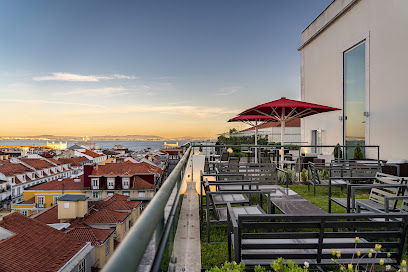
Exploring the Enchanting Alfama District of Lisbon
Discover the charm of Alfama, Lisbon's oldest district, filled with history, Fado music, and stunning views over the city.
Alfama, Lisbon's oldest district, is a captivating labyrinth of narrow streets, vibrant culture, and stunning views that beckon travelers to explore its hidden treasures. With its rich history, traditional Fado music, and picturesque architecture, Alfama offers an unforgettable experience for tourists seeking to immerse themselves in the heart of Portugal's capital.
A brief summary to Alfama district
- Costa do Castelo 1, Lisbon, PT
Local tips
- Visit early in the morning or late afternoon to avoid crowds and enjoy the peaceful ambiance.
- Try local specialties like bacalhau à brás or pastéis de nata at small, family-run restaurants.
- Wear comfortable shoes, as the streets are steep and cobbled.
- Check out the local Fado performances in the evening for an authentic cultural experience.
- Explore the area by wandering; getting lost is part of the charm of Alfama.
Getting There
-
Walking
From Chiado, head east on Rua do Carmo towards Praça do Comércio. Continue straight until you reach the Rossio Square (Praça de D. João IV). From Rossio, take the Rua 1º de Dezembro, which will lead you towards the more historical area of Alfama. As you walk, keep an eye out for the iconic yellow trams. Follow the signs for the Tram 28 route, which will take you through the picturesque streets of Alfama. The total walking distance is about 1.5 kilometers, which should take approximately 20-25 minutes.
-
Tram
From Chiado, walk to the nearest tram stop at Praça do Comércio. Board Tram 28, which is a popular route that goes through various neighborhoods, including Alfama. Make sure to validate your ticket before boarding; a single ticket costs around €3.00. Stay on the tram until you reach the stop 'Alfama - Largo das Portas do Sol.' Once you disembark, you will be in the heart of Alfama, with beautiful views of the river and access to the winding streets of the district.
-
Metro and Walking
From Chiado, walk to the nearest metro station, Baixa-Chiado. Take the Blue Line (Linha Azul) towards Santa Apolónia. After two stops, get off at the Santa Apolónia station. Exit the station and follow the signs for Alfama. This area is about a 10-minute walk from the metro station. As you walk, be prepared for some steep hills and narrow streets typical of Alfama, which will lead you to the heart of the district.
Discover more about Alfama district
Iconic landmarks you can’t miss
Praça Martim Moniz 2
0.3 km
Explore the lively Praça Martim Moniz, a cultural hotspot in Lisbon with vibrant markets, local cuisine, and stunning architecture.

R. de Santa Justa
0.3 km
Explore the enchanting R. de Santa Justa in Lisbon, where history, culture, and vibrant atmosphere come together for an unforgettable experience.

Praça da Figueira
0.3 km
Discover Praça da Figueira, Lisbon's lively square filled with history, culture, and a vibrant atmosphere perfect for tourists.

Statue of King John I
0.3 km
Explore the Statue of King John I in Lisbon's vibrant Praça da Figueira - a majestic monument celebrating Portugal's royal history and culture.

Church of Saint Anthony of Lisbon
0.3 km
Discover the sacred beauty of the Church of Saint Anthony in Lisbon, a historical gem rich in culture and spirituality, perfect for every traveler.

Oldest house in Lisbon
0.3 km
Discover Lisbon's Oldest House - a historical treasure showcasing the city's rich architectural heritage and captivating stories from centuries past.
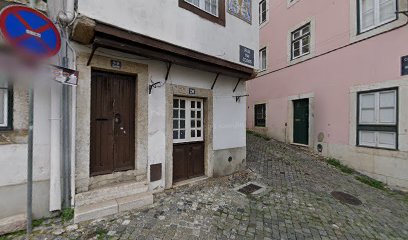
Church of Saint James
0.3 km
Explore the stunning architecture and serene ambiance of the Church of Saint James, a historic gem in the heart of Lisbon, Portugal.
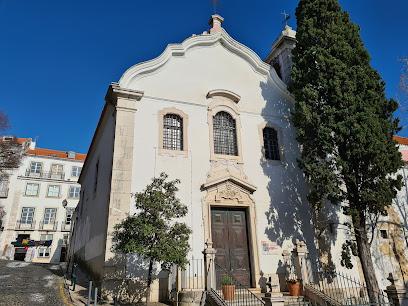
Capela de Nossa Senhora da Saúde
0.4 km
Experience the peace and beauty of Capela de Nossa Senhora da Saúde, a tranquil chapel in Lisbon's historic Mouraria neighborhood, perfect for reflection.
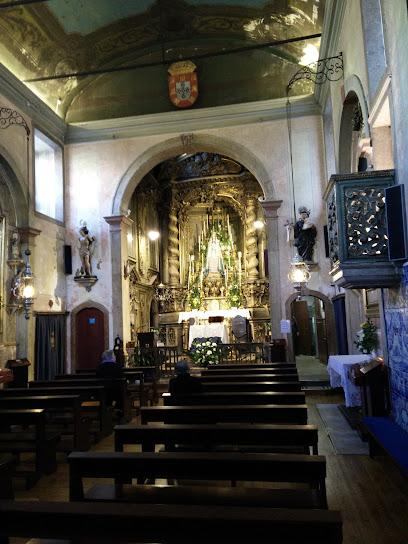
Lisbon Cathedral
0.4 km
Discover the timeless beauty of Lisbon Cathedral, a stunning blend of Romanesque and Gothic architecture in the heart of Portugal's vibrant capital.

R. da Mouraria 38
0.4 km
Explore Mouraria, Lisbon's historic neighborhood known for its Fado music, vibrant culture, and delightful local cuisine.

Galerias Romanas
0.4 km
Discover the hidden treasures of Lisbon at Galerias Romanas, where ancient history and stunning artifacts await your exploration.

Martim Moniz Square
0.4 km
Explore the vibrant Martim Moniz Square in Lisbon, where rich history meets multicultural flavors and lively street life. A must-visit destination for tourists!

Statue of Saint Vicente
0.4 km
Explore the Statue of Saint Vicente, a historical landmark in Lisbon, symbolizing the city's rich cultural heritage and breathtaking views.

Fonte Sul do Rossio
0.4 km
Explore Fonte Sul do Rossio, a stunning fountain in Lisbon's heart, surrounded by vibrant streets filled with culture, cuisine, and history.

Chiado / Baixa
0.4 km
Experience the rich history and vibrant culture of Chiado and Baixa, Lisbon's lively neighborhoods filled with stunning architecture and culinary delights.

Unmissable attractions to see
Punto panoramico
0.1 km
Experience unparalleled panoramic views of Lisbon at Punto Panoramico, the perfect spot for breathtaking photography and relaxation.
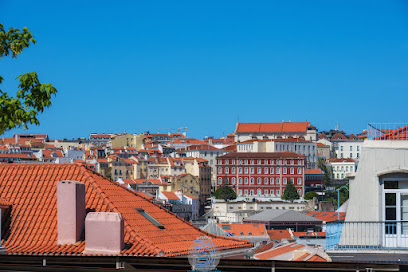
Miradouro do Chão do Loureiro
0.1 km
Experience breathtaking views and serene moments at Miradouro do Chão do Loureiro, a must-visit scenic spot in Lisbon for all travelers.

Parish Church of Saint Christopher and Saint Lawrence
0.1 km
Explore the Parish Church of Saint Christopher and Saint Lawrence, a serene haven in Lisbon showcasing stunning architecture and rich cultural heritage.

Archaeological museum of Sao Jorge Castle
0.1 km
Explore the rich history of Lisbon at the Archaeological Museum of São Jorge Castle, featuring ancient artifacts and breathtaking views.

Casa da Achada - Centro Mário Dionísio
0.1 km
Experience the rich artistic heritage of Lisbon at Casa da Achada - Centro Mário Dionísio, a vibrant cultural center and art gallery.

Mural Graffiti Fado Vadio
0.1 km
Experience the vibrant blend of art and Fado music at Mural Graffiti Fado Vadio, a true gem of Lisbon's cultural scene.

Escadinhas de São Cristóvão
0.1 km
Explore the enchanting Escadinhas de São Cristóvão in Lisbon, where history meets breathtaking views and vibrant local culture.

Largo Chão do Loureiro
0.1 km
Experience the vibrant atmosphere and rich history of Largo Chão do Loureiro, a charming square in the heart of Lisbon, perfect for relaxation and exploration.

Garden of the Castle of São Jorge
0.1 km
Explore the lush landscapes and rich history of the Garden of the Castle of São Jorge, a serene escape in the heart of Lisbon.

Bilheteira do Castelo de São Jorge
0.1 km
Explore the historical charm and stunning views at Castelo de São Jorge, Lisbon's iconic castle and gateway to the city's rich past.

Santa Maria Maior
0.1 km
Discover the historic Santa Maria Maior in Lisbon, where vibrant culture meets ancient architecture, offering a unique travel experience.

Câmera escura do Castelo são Jorge
0.2 km
Experience Lisbon like never before at Câmera Escura do Castelo São Jorge, where history and technology create a captivating visual journey.

Largo dos Trigueiros
0.2 km
Experience the lively ambiance and cultural richness of Largo dos Trigueiros in Lisbon, a must-visit destination for every traveler.

Castelo de São Jorge
0.2 km
Experience the enchanting history and breathtaking views at Castelo de São Jorge, a must-visit castle in the heart of Lisbon.

Castelo de S. Jorge
0.2 km
Experience the grandeur of Castelo de S. Jorge, a historic castle in Lisbon offering stunning views, rich history, and breathtaking gardens.

Essential places to dine
Chapitô à Mesa
0.1 km
Discover Chapitô à Mesa in Lisbon – where stunning views meet exquisite Portuguese cuisine for an unforgettable dining experience.

Floresta das Escadinhas
0.1 km
Discover authentic Portuguese cuisine at Floresta das Escadinhas in Lisbon - where delightful flavors meet cozy ambiance.
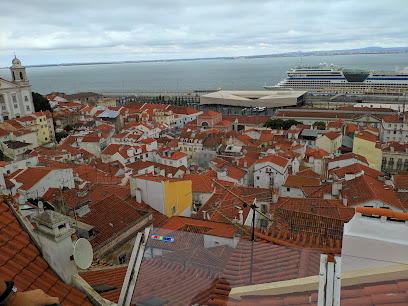
Taberna da Baixa - Casa de Petiscos
0.2 km
Experience the vibrant flavors of Portugal at Taberna da Baixa, where traditional meets contemporary in every dish.

Taberna da Baixa
0.2 km
Savor authentic Portuguese cuisine at Taberna da Baixa in Lisbon – where tradition meets taste.

Solar da Beira Baixa
0.2 km
Discover authentic Portuguese cuisine at Solar da Beira Baixa in Lisbon – where tradition meets flavor in every dish.

Em Alta Na Baixa
0.3 km
Experience authentic Portuguese cuisine at Em Alta Na Baixa in Lisbon - where tradition meets modernity in every delicious bite.

El Clan
0.3 km
Discover El Clan in Lisbon: where culinary artistry meets warm hospitality in a vibrant setting.
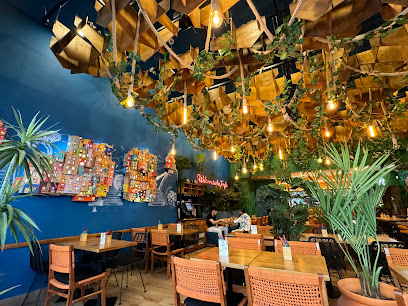
Miss Can
0.3 km
Experience the essence of Lisbon through exquisite tapas at Miss Can, where every bite tells a story.
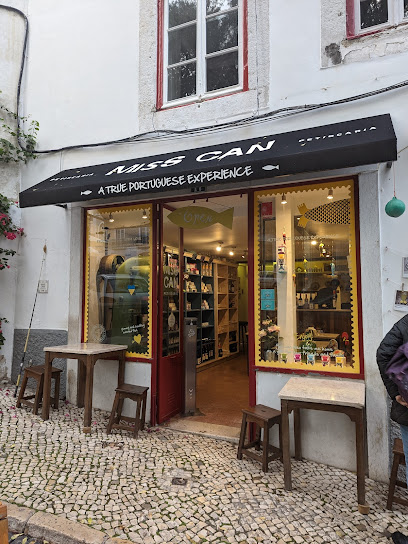
Eating Bear
0.3 km
Discover the vibrant flavors of Lisbon at Eating Bear - your go-to tapas and cocktail destination in the heart of the city.

Restaurante Costa Vicentina
0.4 km
Experience authentic Portuguese cuisine at Restaurante Costa Vicentina in Lisbon - where every dish tells a story from the sea.

Adega Da Mó
0.4 km
Experience authentic Portuguese cuisine at Adega Da Mó in Lisbon - where tradition meets taste in a cozy atmosphere.

Yak & Yeti Lisbon
0.4 km
Experience authentic Nepalese cuisine in Lisbon at Yak & Yeti - where every meal is a flavorful adventure.

A Merendinha do Arco Bandeira
0.4 km
Experience authentic Portuguese cuisine at A Merendinha do Arco Bandeira, where tradition meets family-friendly hospitality in the heart of Lisbon.
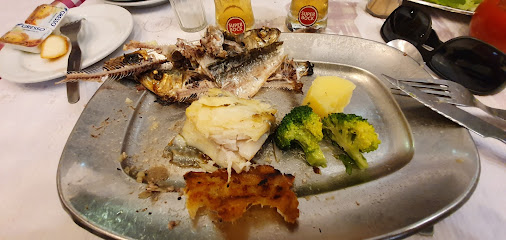
daPrata52 - Petiscos Tapas
0.4 km
Experience authentic Portuguese petiscos at daPrata52 - Petiscos Tapas in Lisbon's heart; indulge in vibrant flavors and local charm.

Zé da Mouraria
0.4 km
Experience authentic Portuguese cuisine at Zé da Mouraria, where tradition meets flavor in the heart of Lisbon.

Markets, malls and hidden boutiques
A Loja Azul
0.1 km
Discover A Loja Azul in Lisbon, where artistic handicrafts meet Portuguese tradition, perfect for unique souvenirs and local treasures.

Castelo Souvenir Shop
0.2 km
Explore the charm of Lisbon at Castelo Souvenir Shop, where unique gifts and local treasures await every traveler.

souvenir shop
0.2 km
Explore the essence of Lisbon through a variety of unique souvenirs at this charming shop, where every item tells a story.

Lisbon Cork
0.2 km
Explore the vibrant world of handcrafted cork souvenirs that capture the essence of Portuguese culture at Lisbon Cork.
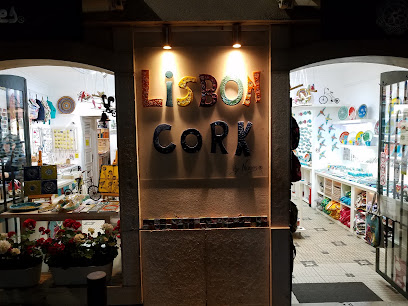
Charm Discovery Experiences Shop
0.2 km
Discover unique gifts and local craftsmanship at Lisbon's Charm Discovery Experiences Shop, where every item tells a story.

A Outra Face da Lua (Baixa)
0.2 km
Explore A Outra Face da Lua in Lisbon for unique vintage fashion pieces that tell a story and reflect your personal style.

Soma Ideas
0.3 km
Explore Soma Ideas in Lisbon for unique, handcrafted souvenirs and home goods that embody Portuguese culture and creativity.

Lisbon Craft
0.3 km
Explore Lisbon Craft: Your destination for unique handmade goods and beauty supplies, reflecting the heart of Portuguese craftsmanship.

Manuel Tavares
0.3 km
Explore gourmet flavors and authentic Portuguese products at Manuel Tavares, Lisbon's premier gourmet grocery store.

Oficina 32
0.3 km
Discover unique handmade gifts at Oficina 32, a charming gift shop in Lisbon, capturing the essence of Portuguese craftsmanship.
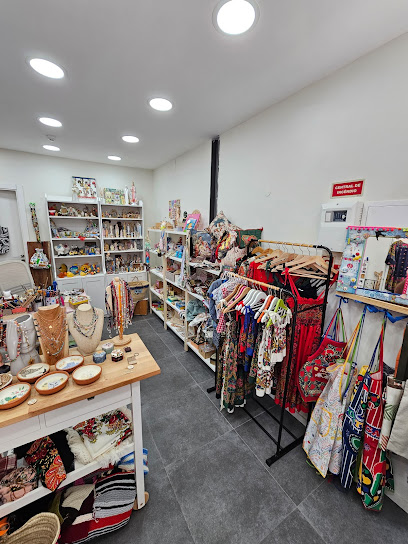
BD SOUVENIR SHOP
0.3 km
Explore the vibrant BD Souvenir Shop in Lisbon for unique gifts and authentic Portuguese crafts that celebrate the city's rich heritage.

Portuguese Souvenir
0.3 km
Explore the heart of Portuguese craftsmanship at Portuguese Souvenir, where authentic gifts and treasures await in the vibrant streets of Lisbon.

Souvenirs shop (부산아저씨 기념품가게)
0.4 km
Explore 부산아저씨 기념품가게 in Lisbon for authentic Portuguese souvenirs that beautifully capture the essence of your travels.
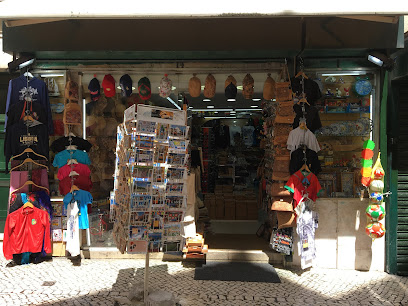
Ponto Lx - Artesanato contemporâneo
0.4 km
Explore Ponto Lx in Lisbon for a unique collection of contemporary crafts and artisan goods that capture the essence of Portuguese creativity.

Shah Forever Gift Souvenir
0.4 km
Explore the charm of Lisbon through unique souvenirs at Shah Forever Gift Souvenir, where culture and craftsmanship come together.
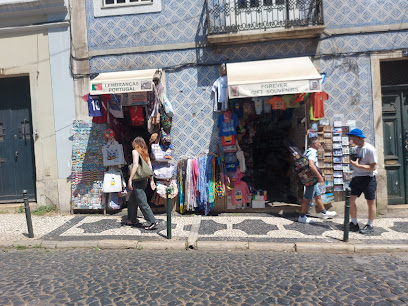
Essential bars & hidden hideouts
Ginjinha Castelo
0.1 km
Discover the authentic taste of Lisbon at Ginjinha Castelo, where tradition and flavor blend in every sip of delicious cherry liqueur.

Boutique Taberna
0.1 km
Experience the authentic charm of Lisbon at Boutique Taberna, where local wines and delicious tapas come together in a cozy atmosphere.

Cerveja Canil Baixa - Craft Beer
0.2 km
Experience the best of Lisbon's craft beer scene at Cerveja Canil Baixa, offering an extensive selection in a cozy, inviting atmosphere.

Antiga Wine Bar
0.3 km
Experience the rich flavors of Portugal at Antiga Wine Bar, Lisbon's go-to destination for wine lovers and culinary enthusiasts alike.

Shoes n´Booze Bar
0.3 km
Experience the vibrant nightlife of Lisbon at Shoes n' Booze Bar, where innovative cocktails and delectable tapas create an unforgettable atmosphere.

Ruby Rosa - Lisbon Art Stay
0.3 km
Discover the captivating Ruby Rosa Rooftop Bar in Lisbon, where stunning views meet creative cocktails and a lively atmosphere.

Manifesto Bar & Lounge
0.3 km
Discover the vibrant charm of Lisbon at Manifesto Bar & Lounge, where delightful drinks and a welcoming atmosphere await you.

Outro Lado
0.4 km
Discover Outro Lado, a unique bar in Lisbon with a charming beer garden and an exceptional craft beer selection that captures the essence of the city.

Estrela do Minho
0.4 km
Discover the vibrant flavors of Portugal at Estrela do Minho, a charming bar in Lisbon serving authentic tapas and fine wines.

Terrasse Alfama
0.4 km
Discover the charm of Terrasse Alfama, a delightful bar in Lisbon's Alfama district, perfect for enjoying drinks and stunning views.

Crafty Corner
0.4 km
Discover Crafty Corner in Lisbon—your go-to spot for exquisite craft beers and a delightful brunch experience.

Memmo Hotel Bar
0.5 km
Experience the vibrant nightlife of Lisbon at Memmo Hotel Bar, where spectacular views meet exquisite cocktails and a cozy atmosphere.

Topo Chiado
0.5 km
Discover Topo Chiado in Lisbon: Where Stunning Views Meet Delicious Food and Drinks in a Lively Setting.
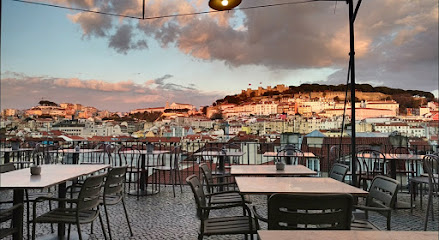
The George
0.5 km
Enjoy a taste of Britain at The George, a vibrant gastropub in Lisbon, with live music and a sports bar atmosphere.

Entretanto Rooftop Bar @ Hotel Chiado
0.5 km
Experience breathtaking views and exquisite cocktails at Entretanto Rooftop Bar, the perfect spot for a memorable evening in Lisbon.
